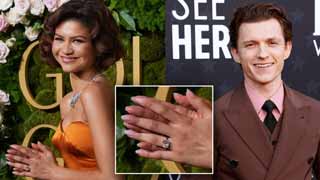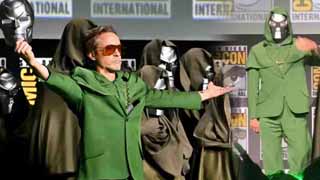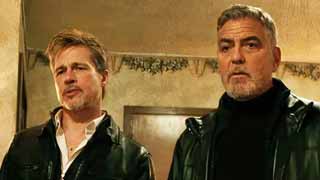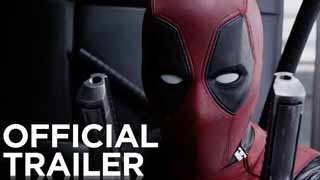The circus is preparing to leave town. Soon the makeshift tents will be dismantled, the portable toilets carted away and the swarm of media covering the Michael Jackson
child sex abuse trial will pack up and go in search of the next big story.
For some, the end of the trial comes as a reminder that it never sparked the public imagination in the way many thought it would 18 months ago when Jackson pleaded
innocent and then delighted a throng of fans outside court by dancing atop his black sport utility vehicle.
"For all the predictions that we were going to go into 24-hour Michael cycle, it didn't really happen," said Robert Thompson, professor of media and popular culture at
Syracuse University.
News organizations recognized that the Jackson trial lacked the resonance of the O.J. Simpson trial, which delved into such fundamental issues as race and police
misconduct, he said.
"In the end, this was just a really bizarre celebrity story important insofar as the fact that Michael Jackson was a superstar and the crimes of which he was accused were
grim, serious ones," said Thompson.
The ban on cameras in the court, a strict gag order and the fact that much of the case revolved around old accusations also dampened interest in the United States, he said.
The interest in Europe was actually higher than in the United States, said BBC correspondent David Willis.
"In the same way that Americans have a fascination for the British royal family, we have this fascination for Hollywood superstars," he said. "For us it's the trial of the
century."
For reporters at court with Jackson, days of monotonous testimony peppered by periods of frenzied excitement have forged a bond, strengthened by the difficulties of
navigating the court's tight security and schedule.
Reporters were regularly corralled behind barricades by sheriff's deputies. Any reporter who forgot to turn off a cell phone in court was quickly escorted out by bailiffs and
issued a red badge with a picture of Judge Rodney Melville.
At one point, the no-nonsense judge joked that his preference to work through lunch would force jurors and media onto the 'Melville diet.'
Outside, the courthouse parking lot resembles a small city filled with television trucks, microphone stands and photographers waiting for their next fleeting glimpse of
Jackson.
Journalists -- whose ranks are expected to swell to over 2,000 by the time the verdict is reached-- include those who have completed tours in Iraq and seasoned celebrity
court veterans from the Charles Manson and Simpson trials.
The trial has cost Santa Barbara County more than $1.8 million, which does not include the cost of the extensive investigation of Jackson. Some of that cost has been billed
to media companies.
For reporters, the bulk of their time has been spent in the tightly run courtroom or what is known as the 'overflow' room, an annex with a television monitor.
Many there have delighted in the small gems of information from testimony that never made headlines: that authorities found a sexually explicit magazine titled Over 50 in
Jackson's bedroom, or that the pop star dreamed of throwing a celebrity animal party and inviting Lassie and Benji.
Santa Maria Mayor Larry Lavagnino said although the city's hotels and restaurants profited from the media's presence, the trial brought with it something even more valuable.
"You say Santa Maria and right off (people) say, 'Oh, the Michael Jackson trial,'" Lavagnino said. "The trial put Santa Maria on the map."
Wednesday, June 08, 2005 12:31 IST







 Tenet Review: An ingenious piece of Nolan's cinematic vision!
Tenet Review: An ingenious piece of Nolan's cinematic vision! 'The Great Heist' Review: A nail-biting Columbian thriller based on a historic robbery
'The Great Heist' Review: A nail-biting Columbian thriller based on a historic robbery Bollywood Stars Who Were Absent from the Big Screen in 2024
Bollywood Stars Who Were Absent from the Big Screen in 2024 Top 10 Bollywood Movies of 2024 - Unforgettable Hits
Top 10 Bollywood Movies of 2024 - Unforgettable Hits Cinematic Gems of India - Highly Acclaimed Regional Movies
Cinematic Gems of India - Highly Acclaimed Regional Movies Jackson trial jurors due to resume deliberations
Jackson trial jurors due to resume deliberations Stewart to marry Lancaster next spring
Stewart to marry Lancaster next spring Goldie Hawn's star parenting rule
Goldie Hawn's star parenting rule Molested woman to take legal action against Star
Molested woman to take legal action against Star